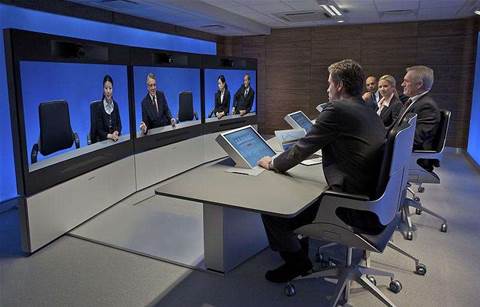Crossing lines
The distinction between videoconference calls and video phone calls are blurring as technology improves.
Desktops: Two-way video communications are widespread using cheap, consumer off-the-shelf systems and free software such as Skype. LifeSize is releasing this month a $3000 high-definition unit for standalone desktop use that integrates with Skype for audio.
Videoconferencing: Traditionally connected groups of people using sound and vision over distance and held in a dedicated room or facility.
Telepresence: High-end ($600,000 or more) facilities that optimize lighting, sound and other environmental factors to make the best use of data-hungry, big-screen high-definition and high-fidelity audio systems that make remote participants feel they are in the same room. Participants may effect changes at the remote location.
Adoption rules to live by
Six reasons why videoconferencing took 131 years to catch on:
- Not every new technology leads to stunning market success;
- Just because the press says it will, does not mean it will;
- Growth often takes longer than expected;
- Growth often reaches lower levels than expected;
- Technological convergence is not a certainty; and
- Innovations involving complex systems face more hurdles to market acceptance than those that stand alone.
Source: On the persistence of lackluster demand: the history of the video telephone, Schnaars and Wymbs (2002)
Links
See a video of Ericsson's vision of the video phone.


+drawn+by+George+Louis+Palmella+Busson+du+Maurier.jpg&h=113&w=200&c=1&s=1)
.jpg&h=113&w=200&c=1&s=1)
.jpg&h=113&w=200&c=1&s=1)


.png&h=142&w=230&c=1&s=1)
_(21).jpg&h=142&w=230&c=1&s=1)
.jpg&h=142&w=230&c=1&s=1)






.jpg&w=100&c=1&s=0)










